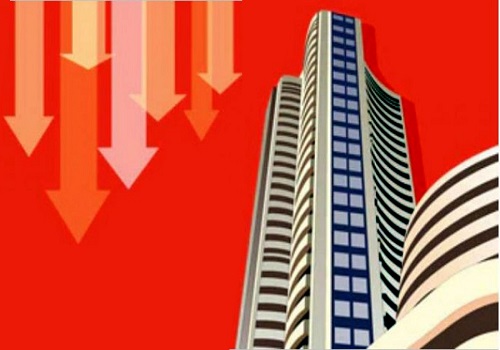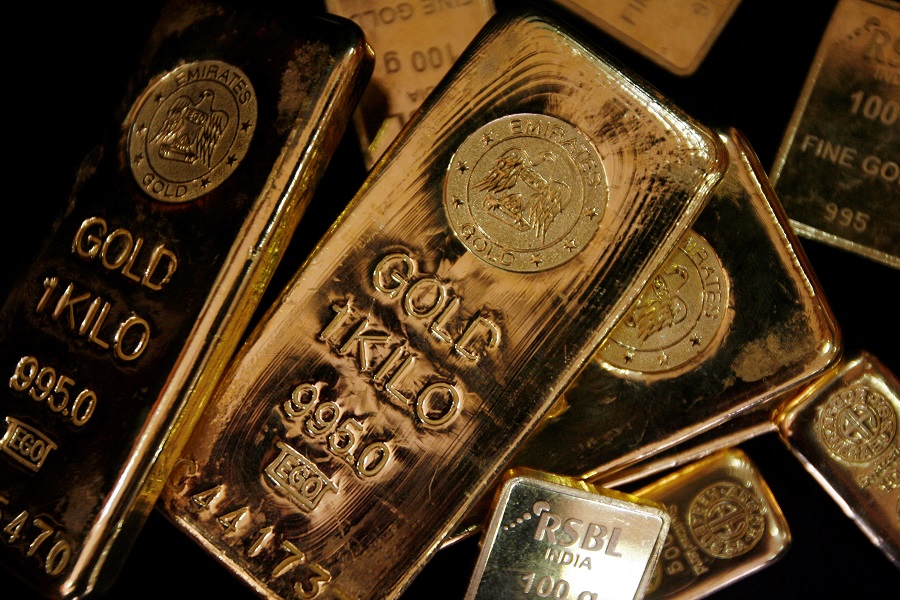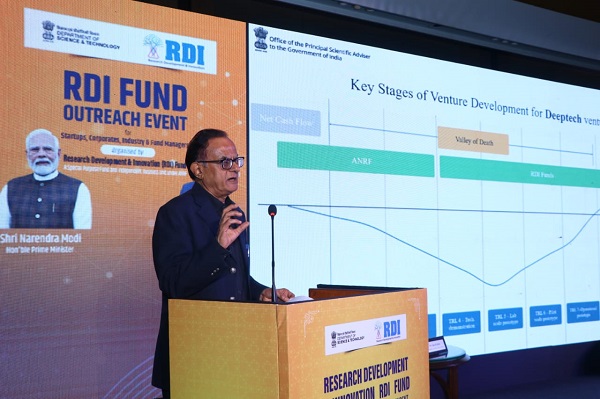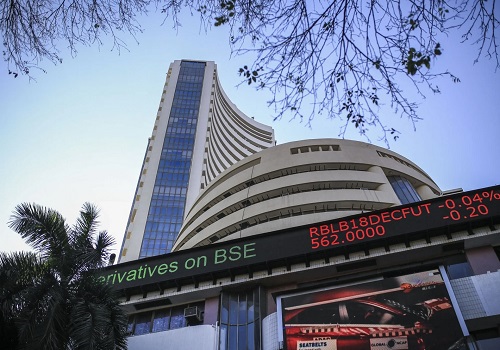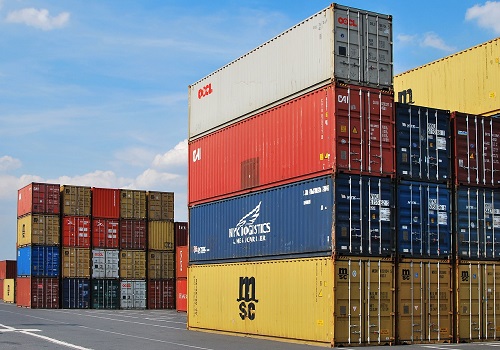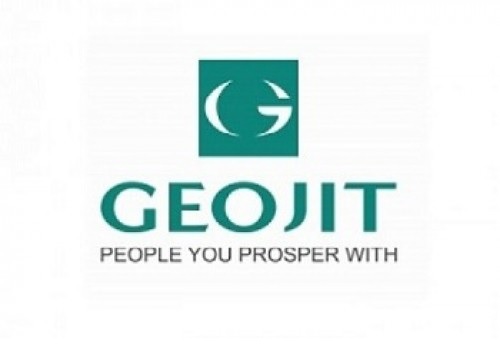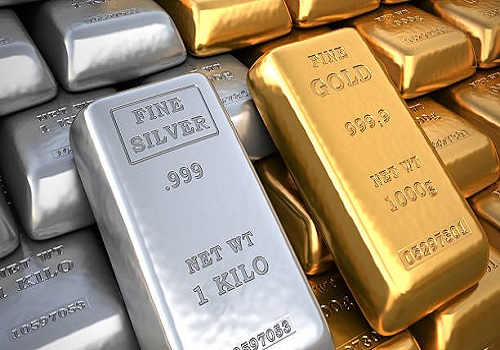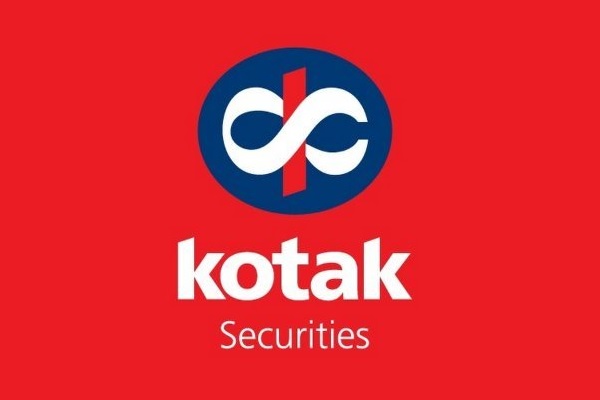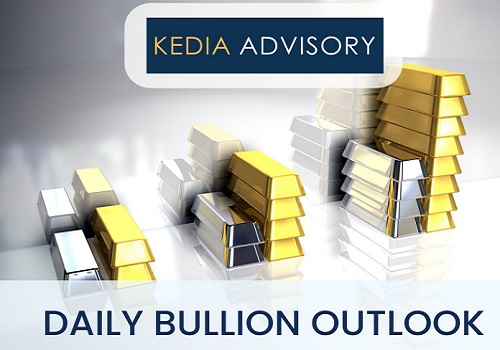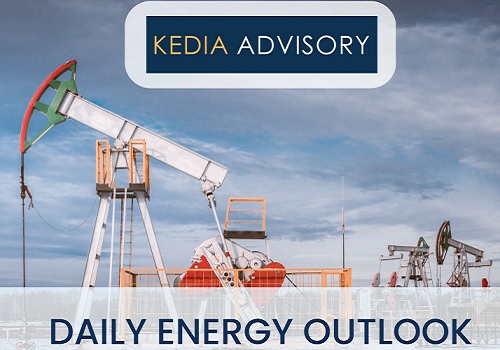Gold trading range for the day is 96710-99540 - Kedia Advisory
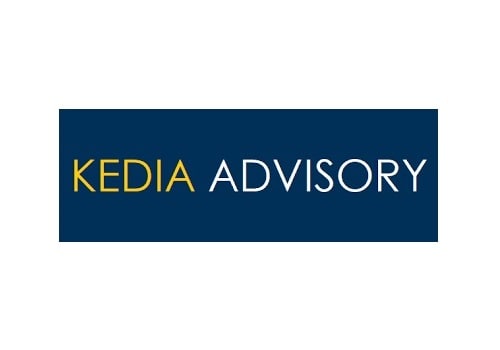
Gold
Gold prices surged by 1.75% to settle at ?98,392, buoyed by rising geopolitical tensions and softening U.S. economic indicators that revived expectations of Federal Reserve rate cuts. Heightened Middle East unrest, with the U.S. repositioning military personnel and threats of retaliation from Iran, spurred safe-haven demand. Simultaneously, weaker-than-expected U.S. producer price data and steady but elevated jobless claims hinted at a cooling labor market. The consumer price index rose 2.4% in May, slightly under the forecast, while core inflation remained steady at 2.8%, supporting the case for potential monetary easing. Further fueling uncertainty were mixed signals on US-China trade relations. While both countries reached a framework to renew their trade truce, final implementation awaits presidential approval. Tariff-related uncertainties persist, as a U.S. court upheld broad tariff powers pending further review. The World Bank’s downgrade of its global growth outlook to 2.3% for 2025 further supported gold’s appeal amid rising macroeconomic risks. Despite the rally, physical gold demand weakened, especially in India where premiums flipped to discounts of up to $56/oz due to near-record local prices. Gold futures witnessed fresh buying interest as open interest surged 19.34% to 15,529. Support is seen at ?97,550, with further downside potentially testing ?96,710. Resistance lies at ?98,965, and a move above could push prices towards ?99,540.
Trading Ideas:
* Gold trading range for the day is 96710-99540.
* Gold rose steered by simmering Middle East tensions and cooler U.S. economic data.
* Data showed U.S. producer prices increased less than expected in May.
* The number of Americans filing new applications for unemployment benefits was unchanged at higher levels last week.
Silver
Silver prices edged up by 0.47% to settle at ?105,885, supported by softer U.S. economic data and heightened geopolitical tensions. The U.S. Producer Price Index (PPI) for May rose only 0.1%, below the forecasted 0.2%, while jobless claims remained at an eight-month high and continuing claims hit their highest level since November 2021. These indicators pointed toward a cooling labor market, boosting expectations for a Federal Reserve rate cut as early as September. Traders now price in 50 basis points of cuts in 2025, with an 80% probability for a September cut and a potential second cut in October. On the fundamentals front, the silver market is projected to post a deficit for the fifth consecutive year in 2025. While global silver demand is expected to hold at around 1.20 billion ounces, industrial usage continues to be the primary demand driver, forecasted to reach over 700 million ounces for the first time due to robust growth in green technologies. Physical investment is also expected to rise by 3%, particularly in Europe and North America, though jewelry demand is forecasted to drop by 6%, led by reduced Indian consumption. Technically, silver is in a short-covering phase, with open interest falling by 7.68% to 17,885. Prices gained ?493. Support is now seen at ?104,430, with further downside potential to ?102,975. Resistance is at ?106,915, and a breakout could lead to a test of ?107,945.
Trading Ideas:
* Silver trading range for the day is 102975-107945.
* Silver gains as investors reacted to softer US economic data and rising geopolitical risks.
* The US Producer Price Index rose just 0.1% in May, below the expected 0.2%.
* Initial jobless claims held at an eight-month high, and continuing claims surged to their highest level since November 2021.
Crude oil
Crude oil prices surged by 1.97% to settle at ?5,844, buoyed by rising geopolitical tensions and supportive macroeconomic cues. The sharp upmove followed comments by U.S. President Donald Trump regarding the repositioning of American personnel in the Middle East, which raised fears of potential supply disruptions due to escalating tensions with Iran. Additionally, renewed optimism in global trade after the U.S. and China reached a framework agreement to ease trade tensions helped boost sentiment for oil demand from the world’s top two consumers. On the economic front, softer-than-expected U.S. inflation data reinforced expectations of an interest rate cut by the Federal Reserve as early as September. A rate cut could stimulate economic growth and, in turn, support energy consumption. Furthermore, data from the U.S. Energy Information Administration (EIA) revealed a larger-than-expected drop in crude oil inventories, with a drawdown of 3.644 million barrels versus an expected 2.5 million barrel decline. Looking ahead, the International Energy Agency (IEA) noted that global oil demand growth is expected to slow to 650,000 barrels per day for the rest of 2025 due to economic headwinds and rising EV adoption. Nevertheless, the IEA revised its full-year 2025 demand growth forecast upward to 740,000 bpd, citing improved economic expectations and lower oil prices aiding consumption. Crude oil is in a short covering phase with a 1.66% drop in open interest, signaling profit booking. Immediate support is at ?5,746, with deeper downside potential towards ?5,648. Resistance lies at ?5,900, and a breakout could see prices testing ?5,956.
Trading Ideas:
* Crudeoil trading range for the day is 5648-5956.
* Crude oil rises as U.S. troop moves stir Iran tension fears, supply concerns grow.
* Increased tension with Iran has raised the prospect of disruption to oil supplies.
* JPMorgan said oil prices could surge to $120-$130 a barrel if the Strait of Hormuz were to be shut.
Natural gas
Natural gas prices edged lower by 0.27% to settle at ?299.1 amid a confluence of bearish fundamentals, including forecasts of reduced demand this week, marginally higher daily production, and robust storage injections. The U.S. added 109 billion cubic feet (bcf) of gas to storage for the week ending June 6, matching expectations and marking a record-tying seventh consecutive triple-digit build. Despite this rise, inventories remain 8.6% lower year-on-year but are still 5.4% above the five-year average, underscoring a balanced yet oversupplied outlook. Production in the Lower 48 states averaged 105.0 bcfd so far in June, down slightly from May's 105.2 bcfd and well below March’s record high of 106.3 bcfd, primarily due to ongoing spring maintenance. However, any bullish implications from reduced output were offset by an expected uptick in LNG feedgas demand. Cameron LNG in Louisiana resumed normal operations, pushing intake to a four-week high of 1.5 bcfd, a sign that export activity may recover in the near term. Weather forecasts suggest warmer-than-normal temperatures across much of the U.S. through June 26, which could potentially raise cooling demand and support prices. Natural gas is currently under long liquidation, evidenced by a 9.28% drop in open interest. Immediate support is seen at ?293.7, and a break below could test ?288.3. Resistance is now pegged at ?308.1, with potential upside to ?317.1 if momentum strengthens.
Trading Ideas:
* Naturalgas trading range for the day is 288.3-317.1.
* Natural gas eased on weak demand outlook, output rise, and record storage injection.
* Cameron LNG intake rose to 1.5 bcfd, the highest in four weeks.
* US utilities added 109 bcf of natural gas to storage from the previous week to 2.707 tcf.
Copper
Copper prices gained 0.4% to settle at ?874.85, supported by a weaker dollar that made the metal more attractive for holders of other currencies. However, broader market sentiment remained cautious amid lingering concerns over global demand and unresolved trade tensions. Optimism from earlier U.S.-China trade talk progress faded despite U.S. President Donald Trump's statement that a deal with Beijing is “done.” Trump's willingness to extend the July 8 deadline for trade negotiations was overshadowed by threats of unilateral tariffs, contributing to market uncertainty. On the domestic front in China, smelters are increasingly turning to exports due to weak local consumption, reflecting soft industrial activity. China’s imports of unwrought copper and products declined 2.5% month-on-month in May to 427,000 tonnes and fell 16.9% on a yearly basis, underscoring weak downstream demand. From a supply perspective, while LME copper inventories are trending lower—especially with stockpiles moving toward the U.S. in anticipation of tariffs—Ivanhoe Mines resumed operations at its Kakula mine in the DRC but revised down its annual production guidance, potentially tightening global supply. The International Copper Study Group (ICSG) reported a shrinking surplus in March at 17,000 metric tonnes versus 180,000 tonnes in February, suggesting improving market balance. Copper is witnessing short covering, evidenced by an 11.29% drop in open interest. Immediate support is at ?871.5, and a break below could drag prices to ?867.9. On the upside, resistance lies at ?877.7, and a move above this could see prices testing ?880.3.
Trading Ideas:
* Copper trading range for the day is 867.9-880.3.
* Copper edges up on weaker dollar, but demand worries keep outlook subdued.
* Trump may extend July 8 deadline but plans to issue global trade deal terms.
* LME copper stocks decline, with shipments to U.S. rising ahead of potential tariffs.
Zinc
Zinc prices edged lower by 0.22% to settle at ?252.1, pressured by persistent concerns over weakening demand from China, the world’s top consumer. On the Shanghai Futures Exchange, zinc extended its decline for a third straight session, touching a two-month low of 21,845 yuan per tonne. This slump reflects limited buying interest as Chinese consumers are only meeting immediate procurement needs amid sluggish demand and slowing industrial activity. China's manufacturing PMI has posted a second consecutive month of contraction, indicating sustained weakness in the sector. This has led to expectations for further government stimulus to bolster industrial demand. However, speculative activity in the zinc market remains subdued as traders await concrete signs of trade stability and economic revival. On the supply side, the global zinc market surplus narrowed to 23,700 metric tons in March from 75,900 tons in February, according to the International Lead and Zinc Study Group (ILZSG). For Q1 2025, the global surplus stood at 143,000 tons, slightly down from 148,000 tons in the same period last year, suggesting modest supply tightening. Meanwhile, China's refined zinc output declined by 1% in May on a month-over-month basis but was still up 2% year-over-year. The monthly drop stemmed from maintenance-related shutdowns across key provinces such as Henan, Guangxi, and Qinghai. Zinc is under long liquidation as open interest dropped 7.39% to 2,469. Immediate support is at ?250.8; a breach below may test ?249.6. Resistance is at ?253.7, with a move above potentially extending to ?255.4.
Trading Ideas:
* Zinc trading range for the day is 249.6-255.4.
* Zinc prices fell for a third straight session, hitting lowest level since April.
* Weak Chinese manufacturing demand continues to weigh heavily on market sentiment.
* Speculative interest declined as traders await clearer trade and recovery signals.
Aluminium
Aluminium prices inched up by 0.10% to settle at ?242.6 amid stable domestic production and geopolitical factors influencing global trade flows. In May 2025, China's aluminium output rose 2.7% year-on-year and 3.4% month-on-month, with total production reaching 3.75 million metric tons. Cumulatively, output in the first four months of 2025 stood at 14.79 million tonnes, up 3.4% from the previous year. Despite steady operating capacity among Chinese smelters, market participants remain cautious due to the lack of new production ramp-ups or major maintenance shutdowns during the month. On the international front, geopolitical tensions—especially the persistent US-China trade dispute—have impacted aluminium trade volumes. U.S. imports of primary aluminium in April fell sharply by 20% year-on-year to 281,500 tons, largely due to the 25% import tariff imposed in March. Notably, imports from key suppliers such as Canada and the UAE dropped by 23% and 19% respectively, while imports from South Africa more than doubled. Meanwhile, China's aluminium exports in May rose 5.6% month-on-month to 547,000 tonnes but fell 3.2% compared to the same period last year. The year-to-date exports are down 5.1%, reflecting subdued global demand. The market is undergoing short covering, as indicated by a 2.22% decline in open interest to 3,882 contracts. Aluminium is finding immediate support at ?241.7, with further downside possible to ?240.8. On the upside, resistance is seen at ?243.3, and a breakout could push prices toward ?244.
Trading Ideas:
* Aluminium trading range for the day is 240.8-244.
* Aluminium settled flat as aluminium production in May 2025 increased by 2.7% YoY and 3.4% MoM.
* China’s consumer prices fell for the fourth straight month, while producer price deflation deepened to its lowest level in nearly two years.
* China in May exported 547,000 tonnes of unwrought aluminium and aluminium products, up 5.6% on month but down 3.2% on year.
Turmeric
Turmeric prices eased by 0.44% to settle at ?14,800, primarily pressured by a surge in arrivals and subdued export enquiries. Total arrivals jumped sharply to 57,500 quintals, nearly doubling from 29,860 quintals in the previous session, creating near-term supply-side pressure. However, the downside remains limited due to ongoing concerns about lower production estimates and quality challenges in key producing regions. Although the sown area has increased by 10% this season to 3.30 lakh hectares from 3 lakh hectares last year, actual production gains may not mirror the acreage expansion due to adverse weather. Untimely rains have affected crop productivity, and yields are anticipated to be 10–15% lower, particularly in the Nanded region, where small rhizomes and crop rot have been reported. These factors continue to provide underlying support to prices. At the Duggirala market, high-quality new arrivals are fetching a premium over older stocks, indicating strong buyer interest despite the season nearing its end. About 50–55% of the total new crop has been traded, with arrivals expected to continue through June. In a positive development, the Himachal Pradesh government has launched turmeric procurement from May 15 to June 15, 2025, to promote natural farming. On the export front, turmeric shipments rose 8.83% YoY to 1.76 lakh tonnes in FY25. The market witnessed fresh selling, with open interest rising 7.9% to 13,105 contracts. Immediate support lies at ?14,586, below which prices may test ?14,372. Resistance is seen at ?15,032, and a breakout above could drive prices to ?15,264.
Trading Ideas:
* Turmeric trading range for the day is 14372-15264.
* Turmeric dropped on profit booking due to increased arrivals and owing to weak export enquiries.
* However downside seen limited amid persistent concerns about lower production estimates.
* Turmeric exports during Apr - Mar 2025, jump by 8.83 percent at 176325.34 tonnes compared to Apr - Mar 2024.
* In Nizamabad, a major spot market, the price ended at 14559.55 Rupees gained by 0.28 percent.
Jeera
Jeera prices edged higher by 0.43% to close at ?19,895, supported by lower-level buying from domestic players despite tepid export demand. The price gain came amid persistent pressure from rising arrivals and ample stocks. Total arrivals surged to 32,900 bags from 28,000 bags in the prior session, contributing to a supply-heavy environment and keeping overall market sentiment cautious. Export activity remains subdued, largely due to the end of the retail season and limited foreign buyer participation. While the export business is currently being fulfilled through available stock, demand remains weak, adding further weight on prices. Farmers are holding around 20 lakh bags of jeera, but only 3–4 lakh bags are expected to be traded before the season concludes. Crop-wise, the season’s output is projected to match last year's levels owing to favorable sowing and improved weather during later stages. However, sowing delays of nearly a month in Gujarat and Rajasthan could impact harvest timelines. On the international trade front, jeera exports surged 39.63% year-on-year to 2.12 lakh tonnes in FY25. March exports rose 33.40% over February but remained 46.03% lower compared to the same month last year. The market is showing signs of fresh buying, with open interest increasing 3.54% to 5,175 contracts. Support is placed at ?19,850, with further downside possible to ?19,800. Resistance is seen at ?19,960, and a move above this level could drive prices toward ?20,020.
Trading Ideas:
* Jeera trading range for the day is 19800-20020.
* Jeera gains due to lower level buying from domestic buyers despite subdued export demand.
* The current season is expected to have similar production levels as last year due to better crop conditions.
* Jeera exports during Apr - Mar 2025, rose by 39.63 percent at 212502.49 tonnes compared Apr - Mar 2024.
* In Unjha, a major spot market, the price ended at 20501 Rupees dropped by -0.08 percent.
Views express by all participants are for information & academic purpose only. Kindly read disclaimer before referring below views
